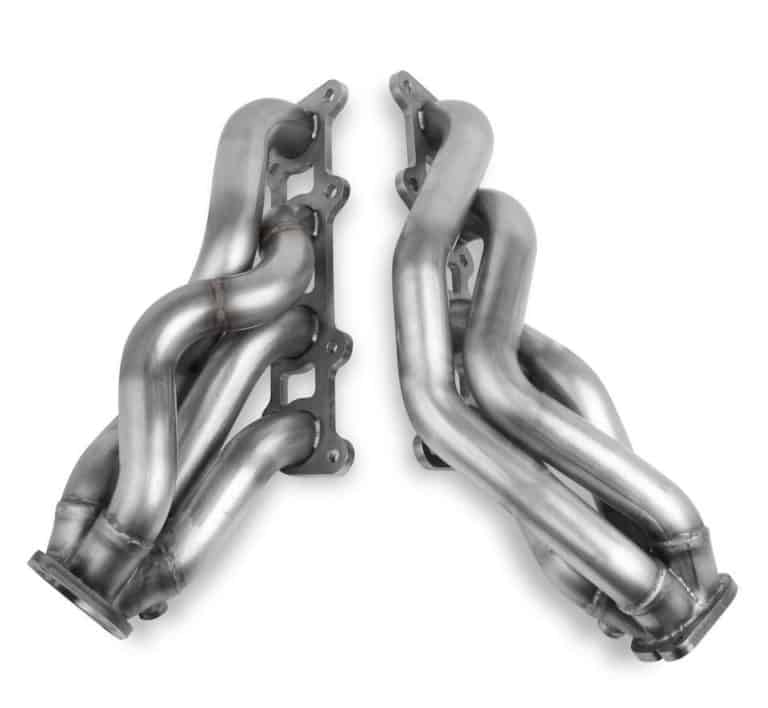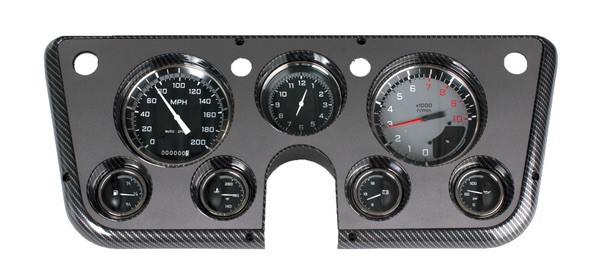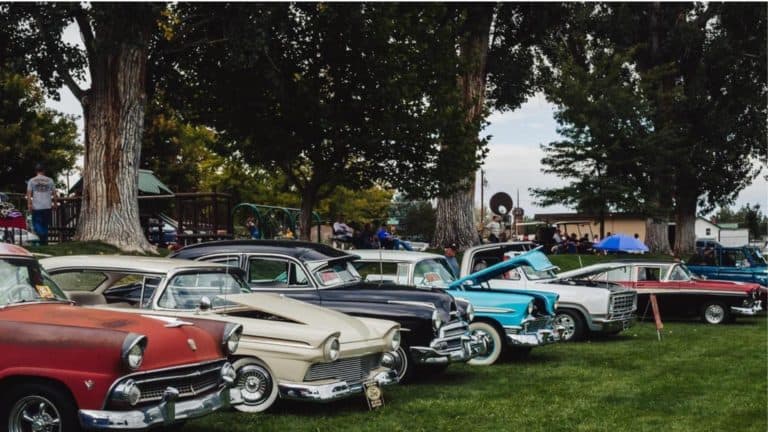Top Questions Answered About Choosing The Best Radiator For Your Truck
It’s inevitable, the radiator in an old truck will not last forever and it’s going to need to be replaced. My 1972 C10 project truck is in need of a radiator pretty badly right now. There are so many choices for radiators, how do you ever know which one is the best for your truck?
What do you need to know when searching for a replacement radiator?
- What are you using the truck for?
- Do you need a downflow or a crossflow radiator?
- Why choose aluminum, copper-brass, or plastic?
- What is tube size compared to row quantity?
- What is your engine size and horsepower?
- How much engine compartment space is available?
- Do you need an electric or a flex fan?
- Transmission type: automatic or standard?
- Does the truck have air conditioning?
Most project truck builds will be shopping for a replacement radiator at some point, either from damage, or because it is just old and tired. Follow along as we go through all the different choices and pick the perfect radiator for your truck.
What Are You Using the Truck For?
My 1972 C10 is a 454 with around 400 horsepower and an automatic transmission behind it. I will need a little more cooling than the original radiator is able to offer. The original radiator was intended for a 350/th350 combination.
If you have changed out your engine, you may need a completely different type of radiator.

If you are the guy in this video pulling a 747 jet plane then you’re going to need a radiator that actually exceeds the manufacturer’s recommendation for tube count and tube size. On a hot day you will need all the cooling you can get for that overworked engine.
Or are you the guy that drives his totally restored truck with the original engine and transmission to car shows on the weekends?
Or maybe you are the guy that has built up a 500 horsepower monster that cruises the streets and takes your truck to the drag strip for some weekend fun.
All of these trucks have a need for a different type of radiator for what they are being used for.
Do You Need a Downflow or a Crossflow Radiator?
My 72 C10 has a pretty wide crossflow radiator as do most trucks of this era. You would be hard pressed to find a down flow radiator in anything newer than the 1950’s, but there are still some vehicles that use them.
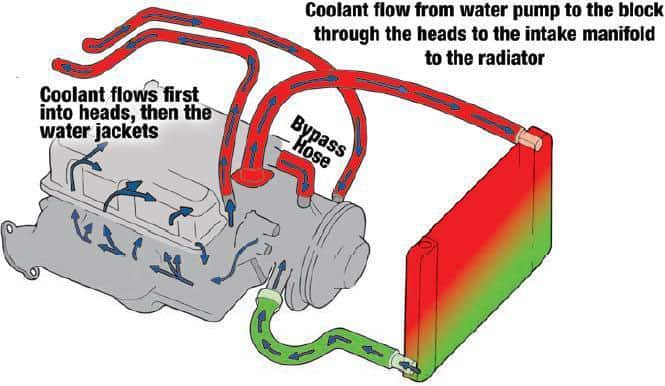
Radiators are often broken down into two main styles: crossflow and downflow. A crossflow consists of a vertical tank on each side that has a series of cooling tubes and fins making up its core. The coolant in this type of radiator flows horizontally across the radiator core from the inlet side to the outlet side. The water pump forces the water to flow through the radiator so it can be cooled.
A downflow radiator’s tanks run horizontally at the top and bottom with the tubes running vertically through the core. The coolant enters the tank at the top of the radiator and flows vertically to the outlet at the bottom of the radiator. Aided by gravity the fluid flows quicker through this type of radiator.
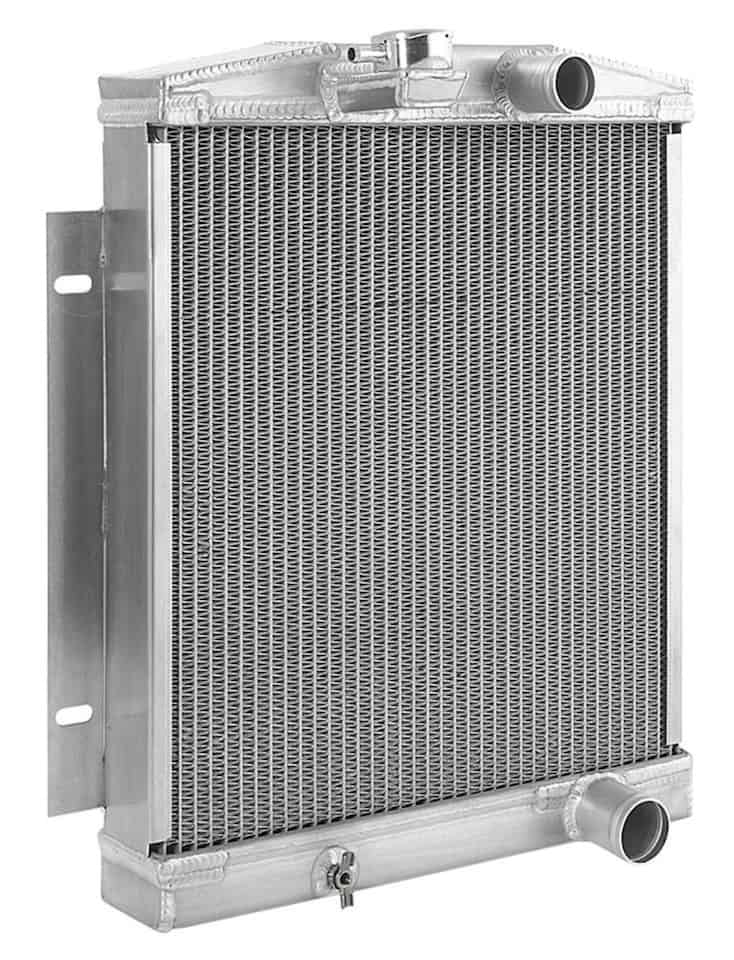
Unlike a downflow radiator, which has gravity working against it, a crossflow radiator holds on to the coolant just a little longer, allowing it to dissipate heat a little better.

Because of its heat dissipation abilities, along with its (typically) larger core surface area, the crossflow radiator is often the best choice for high-rpm, high-output engines. The coolant tends to stay a little longer in the radiator and is cooled better. Also the downflow radiator is normally taller and doesn’t fit the designs of cars and trucks being built today.
Why Choose Aluminum, Copper-Brass Or Plastic?
From the very earliest automobiles to the early 1970s, radiators made from copper and brass were used in 100% of cars and trucks being built. There wasn’t any reason to use any other metals because there weren’t any that could compete with the metal’s many advantages.
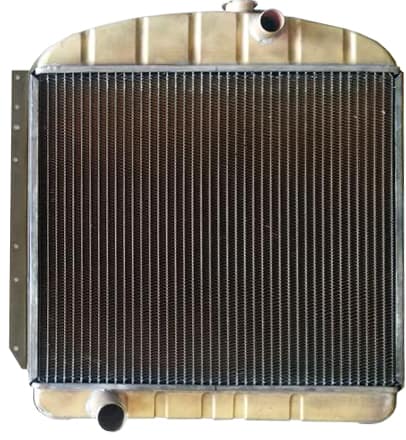
Early in the 1970’s, Volkswagen switched from an air-cooled engine to a water-cooled engine. It was just a few years later after the oil crisis started that cars and trucks needed to be made of lighter materials.
This is when they started building radiators from aluminum as it is one third the density of copper/brass and will handle heat very well for radiators. Aluminum was also less expensive. These qualities – along with dire predictions from commodity analysts that copper/brass would be in short supply in the 1980s, created a demand for using aluminum for radiator manufacturing.
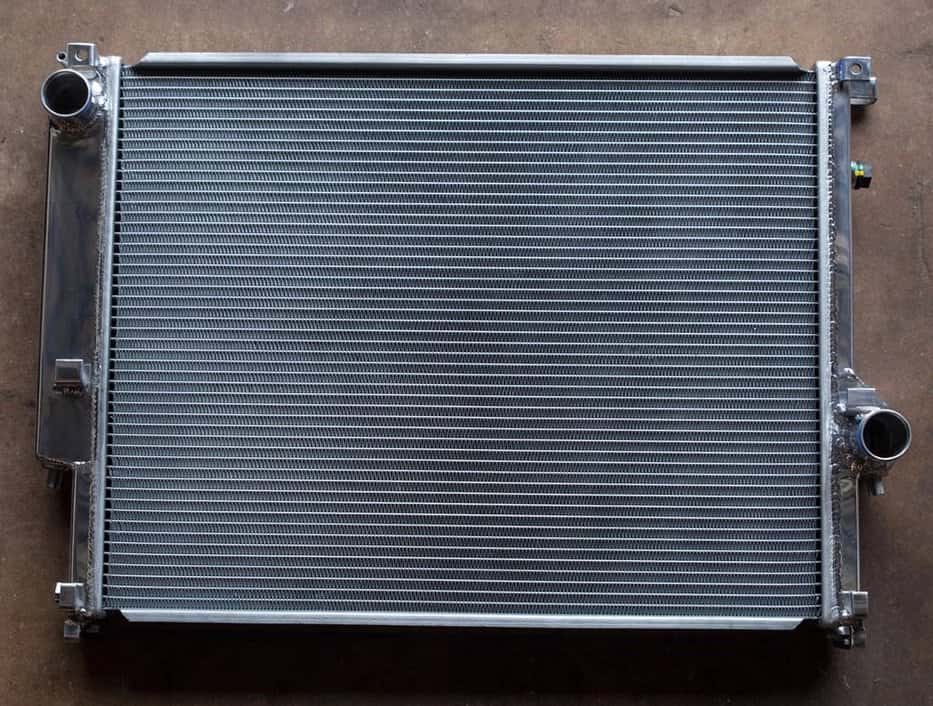
In the last 20 years aluminum has become the most used metal in radiator production by about a 10% margin. In the high end aftermarket radiators, copper/brass is still number one with almost 90% of production.
Radiator design has changed over the years, and recently there’s been a trend towards using radiators made mostly from plastic instead of metal. While plastic radiators are definitely cheaper to produce and install than their metal counterparts, they should probably ultimately be replaced.
A metal radiator will last much longer than the plastic radiator. A plastic radiator is much cheaper to buy.
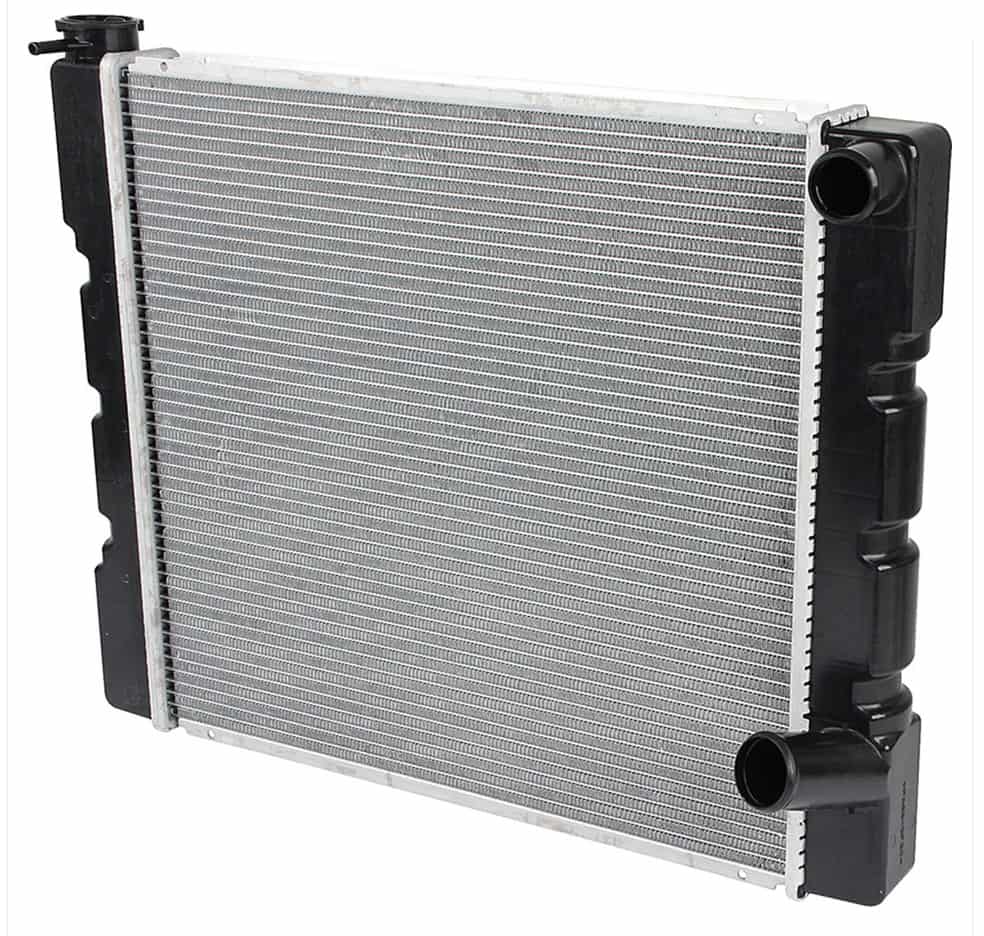
With the opening of a vehicle’s thermostat, 200 plus degree fluid goes into the plastic tank, and with this constantly happening it can crack the plastic tank.
When your plastic radiator has cracked it will have to be replaced, it cannot be repaired like a metal radiator. The aluminum radiator is better than plastic for these problems but the copper/brass are more durable than both plastic and aluminum and will last much longer.
In other words the manufacturers are using as much plastic in their radiators as possible to lower the cost of production. There seems to be no other advantage for plastic other than a savings of weight and cost of production.
What is Tube Size Compared To Row Quantity?
Modern radiators consist of one row or several rows of tubes and fins that transport the coolant from one side of the radiator to the other, or in the case of a down flow from top to bottom. Some versions are also referred to as a corrugated fin design, or pack type.
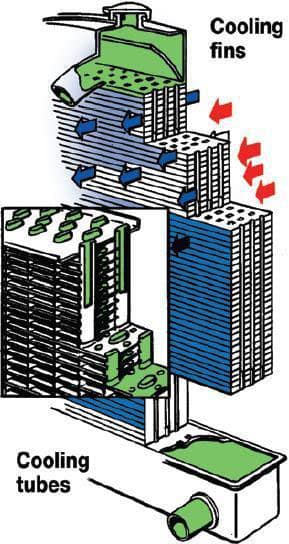
As aluminum is quite a lot stronger than copper/brass, the diameter of the tubes can be increased while not making the tube walls thicker and larger. This allows for a two row aluminum radiator with one inch tubes to dissipate heat at close to the same efficiency as a copper/brass radiator with five 1/2 inch diameter tubes.
This design of two rows of one inch tubes will also cause less air restriction than a radiator with 3 or more tubes which will allow the two tube radiator to cool a lot more effectively. Even for aluminum radiator comparison it comes down to core thickness and cooling tube size. A large tube radiator will displace heat much better due to its increased capacity while the only noticeable difference mat be that it has a slightly thicker core.
What is Your Engine Size And Horsepower?
In all reality aluminum radiators are the best choice for high performance trucks and cars with high output motors, cars and trucks that are in competition and custom built street rods.
Copper/brass radiators are the best choice for someone doing an original restoration or those who want a nostalgic look for their build.
If you have any concerns about overheating on your vehicle the rule of thumb is bigger is better. It is important to get a direct fit radiator for your truck as a universal fit may not fit how you would like it to.
How Much Engine Compartment Space is Available?
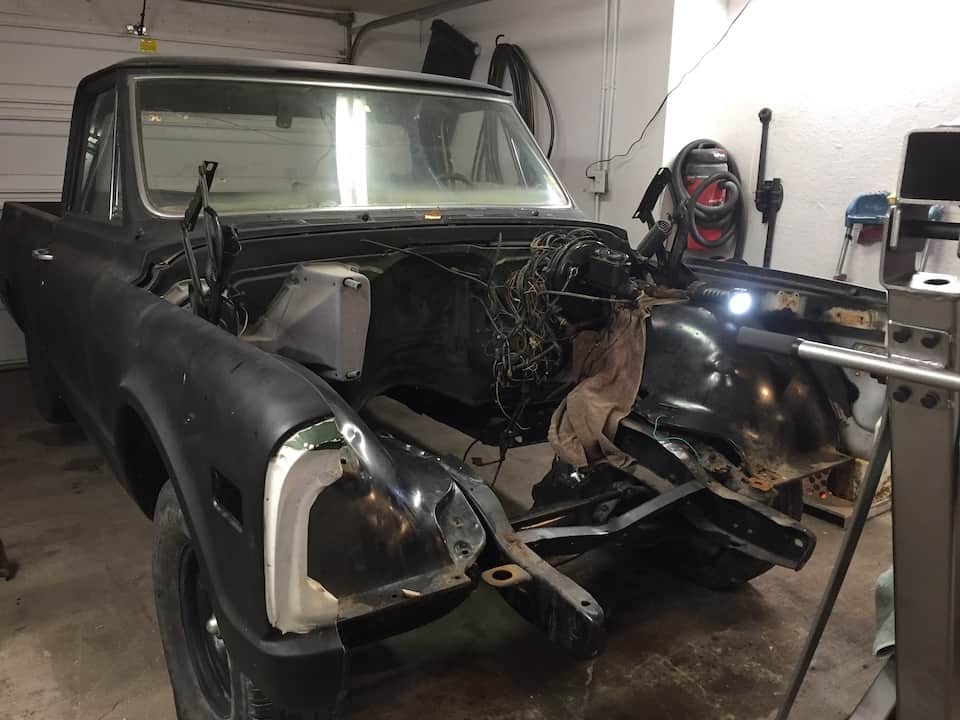
This is a big determining factor in the radiator you will be choosing. It’s always a good idea to fit a large enough radiator, whether it is sheer size, or number of rows that you can feel certain that it will do the job.
You have to take into account if the radiator you purchase will fit in the same position as the old radiator. If you have to rebuild the radiator support area you will need a lot of tools and expertise.
It goes back to finding a good quality radiator with enough cooling rows that will fit in the original space provided.
Do You Need an Electric Or a Flex Fan?
There are so many fans available on the market today, it can be a really hard to choose the right one.
An electric fan is a better performance solution, freeing up maximum horsepower and mpg. But it’s not always the better cooling solution.
If your vehicle uses a belt-driven cooling fan and you’re not doing any major changes to the engine or cooling system, the simplest thing to do is to keep a belt-driven setup. You increase your car’s horsepower and fuel economy without giving up cooling capability by using a flex fan over the original fan.

In my truck I went with a flex fan as I have a installed a serpentine belt system and wanted to keep the look of having a fan on my truck. Call me old school.
Transmission Type: Automatic 0r Standard?
This choice seems to be pretty easy unless you choose to go with a transmission cooler that is separate from your radiator. This isn’t highly recommended as most automatic transmissions, especially if you have increased the horsepower of your truck or use it for hauling or pulling loads, can use all the cooling they can get.
It’s recommended to purchase a radiator with the transmission cooling in it and add the extra cooling capacity. There are a number of auxiliary transmission coolers available that aren’t very expensive and are easy to install.
Does The Truck Have Air Conditioning?
This is a very important aspect of choosing the correct radiator for your truck. If you have air conditioning you will need a radiator with extra cooling capacity.
When ordering your new radiator be sure and tell the sales representative if you have air conditioning or ever plan on installing it so you will have the cooling capacity you need in the future.
Radiator Pricing: Some Examples
Prices for a 1972 C10 with a 454 and TH400 automatic transmission
| ECP- 2 – 1-inch rows aluminum | $247.00 |
| Dewitts- 2 -1- inch rows aluminum | $549.99 |
| Speedway Motors 4 row | $419.99 |
| Jegs Champion 2 – 3/4 inch rows | $195.99 |
| Mishimoto 3 row | $292.95 |
A radiator is a heat exchanger that lowers the temperature of the liquid coolant after it leaves the internal combustion engine. Radiators are made from header and collector tanks linked by a core with many narrow passages that provide a high surface area relative to volume.
John F Kershaw
Final Thoughts
After all the reading and studying of which would be the perfect radiator for my truck I decided I need a two row with one inch tubes. If I can find a three row with one inch tubes and make it fit I may do that but I don’t want to be trying to squeeze in a radiator that is too thick.
I don’t plan on pulling any 747’s or doing any real hard drag racing at a track. I believe I’m the middle of the road guy who likes to cruise and put the pedal down once in a while. Happy Trucking!
The Tool Box
Heres a great set of tools for your shop or garage.

And heres a nice box to keep them in.

Related Topics
Are aluminum radiators better than copper/brass radiators? An aluminum radiator will cool a lot better than a copper brass radiator. As an example an aluminum radiator with 2 rows of 1″ tubes has the same cooling capacity as a copper/brass radiator with 5 rows of 1/2″ tubes. An aluminum radiator provides high efficiency, is much lighter, and has a equal life expectancy compared to copper/brass radiators.
Which are better, aluminum or plastic radiators? The biggest reason to choose a metal radiator over a plastic model is because it will last much longer. The aluminum core that is in most plastic radiators is a little more durable. The copper/brass are more durable than an aluminum radiator but don’t cool nearly as well with the same amount of tubes.
Sources: Kershaw, John F.. High-Performance Automotive Cooling Systems. United States, CarTech, Incorporated, 2019.
Motortrend.com


